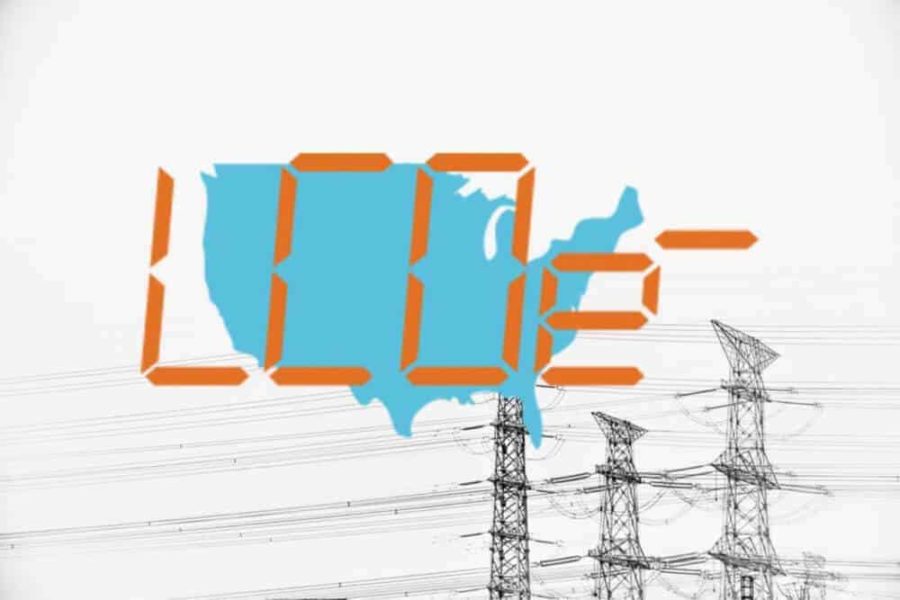Natural gas and wind are the lowest-cost technology options for new electricity generation across much of the U.S. when cost, public health impacts and environmental effects are considered, according to new research released today by The University of Texas at Austin.
University researchers assessed multiple generation technologies including coal, natural gas, solar, wind and nuclear. Their findings, as depicted in a series of maps illustrating the cost of each generation technology on a county-by-county basis throughout the U.S., are featured in a new white paper titled “New U.S. Power Costs: by County, with Environmental Externalities.”
The paper is part of a comprehensive study coordinated by UT Austin’s Energy Institute titled the “Full Cost of Electricity (FCe-),” an interdisciplinary project that synthesizes expert analyses from faculty members and other researchers across the university — from engineering, economics, law and public policy.
The research team adopted a holistic approach to probe the key factors affecting the total direct and indirect costs of generating and delivering electricity. Their work resulted in the production of a series of authoritative white papers that provide an in-depth assessment and examination of various electric power system options.
Researchers categorized the electricity system into three principal components: consumers; generation technologies; and the wires, poles, storage and other hardware required to connect end users and generators. Taken as a whole, the white papers assess the interaction among these three components, as well as costs often considered external to the electricity system, such as environmental effects and public health impacts.
“These are complex, interrelated issues that cannot be adequately addressed from one perspective,” said Dr. Tom Edgar, director of the Energy Institute. “We assembled a cross-disciplinary team to provide a fuller understanding of these costs and their policy implications.”
For the white paper on power generation costs, researchers used data from existing studies to enhance a formula known as the Levelized Cost of Electricity (LCOE). In addition to including public health impacts and environmental effects — which the LCOE typically does not — the research team used data to calculate county-specific costs for each technology.
The team also developed online calculators to facilitate a discussion among policymakers and others about the cost implications of policy actions associated with new electricity generation.
Dr. Joshua Rhodes, postdoctoral research fellow at the Energy Institute and lead author of the paper, said the cost estimates are based on a series of assumptions that researchers debated at length.
“We think our methodology is sound and hope it enhances constructive dialogue,” Rhodes said. “But we also know that cost factors change over time, and people disagree about whether to include some of them.
“We wanted to provide an opportunity for people to change these inputs, and the tools we’ve created allow for that,” he added.
Researchers analyzed data for the most competitive sources of new electricity generation. Wind proved to be the lowest-cost option for a broad swath of the country, from the High Plains and Midwest and into Texas. Natural gas prevailed for much of the remainder of the U.S.; nuclear was found to be the lowest-cost option in 400 out of 3,110 counties nationwide.
The FCe- study examined numerous factors affecting the cost of electricity generation, including:
- Power Plant Costs (both operating and capital costs)
- Environmental and Health Costs (air quality, greenhouse gases)
- Infrastructure Costs (transmission & distribution lines, rail, pipelines)
- Fuel Cost (variability, full fuel cycle)
- Integration of renewable and distributed energy resources
- Energy Efficiency
- Government financial support for electricity generation (subsidies)
Funding for the FCe- study came from a variety of industrial, governmental and nonprofit organizations including Austin Energy, City Public Service Energy, Sharyland Utilities, Chevron, the Cynthia and George Mitchell Foundation and the Environmental Defense Fund, as well as the Energy Institute. In addition, technical input was provided by the American Wind Energy Association, ConocoPhillips, First Solar, NRG, the National Renewable Energy Lab, the Pedernales Electric Cooperative, and AEP. Go here for details on the Energy Institute’s funding sources.


